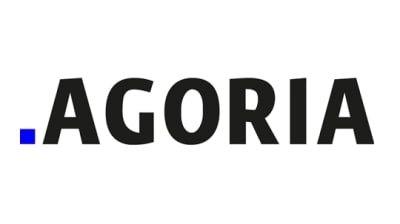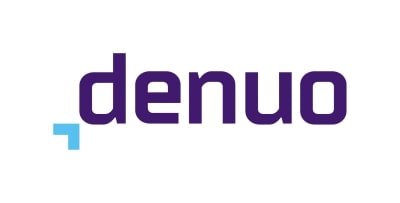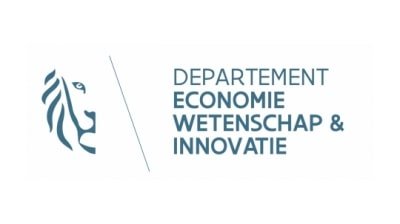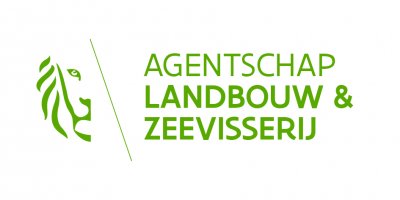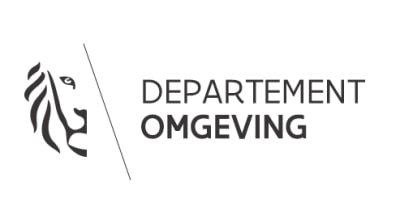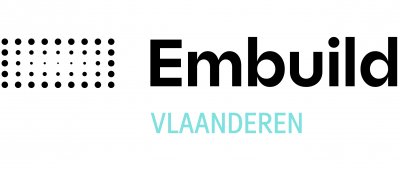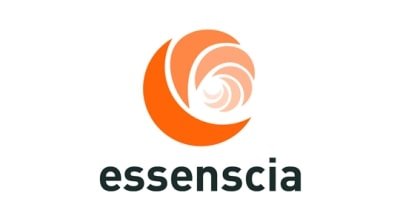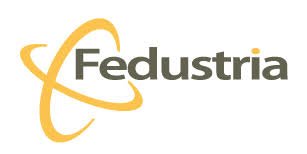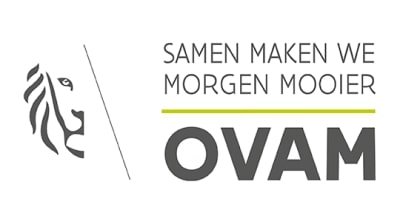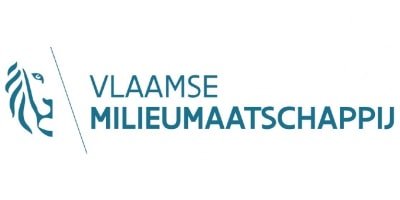Topics
We organise our actions in six thematic & strategic agendas:
Strategic Agendas:
Bio-economy
Circular Construction
Chemicals/Plastics
Manufacturing Industry
Food Chain
Water Cycles
Seven leverages provide additional support:
Leverage effects:
Lever Policy Instruments
Lever Circular Procurement
Lever Communication
Lever Innovation & Entrepreneurship
Lever Financing
Lever Jobs & Skills
Lever Research
What, why and how?
Why are we pursuing a circular economy?
Future visions 2050
How do we see our circular future?
About our management
Who steers what at Flanders Circular?

At the core of the circular economy is the principle that nothing is lost: just like in the natural world, raw materials circulate endlessly in the system. This benefits all: the planet, businesses, and the people. The link between ecological and economic gain is the attraction of the circular economy: sustainability suddenly becomes an opportunity instead of something that just has to be done.
The number of companies that are seeing the advantages of the circular economy is increasing. Large companies are putting feelers out, bankers are studying their role, and start-ups are launching new concepts. The most innovative players fill a niche that is still small but no less important. They subject the circular principles that look so nice on paper to the harsh reality of the market. Does the consumer want to come along? Will we secure the financing? Is what we are doing actually more sustainable?
5 circular business models
Below we show how companies can take advantage of the circular economy in the real world. Each time, we give an example of a Belgian frontrunner. An enterprise can generally embark upon five routes towards more circularity:
- Circular input
- Raw materials recovery
- Extension of working life
- Sharing platforms
- Product as a service
The figure below, borrowed from Accenture, shows the different business models. The thick ring in the middle represents the chain or life cycle of a product: from raw material to sale, to end of life and return. Different loops or extra circuits can occur along the chain. For example: a product that becomes defective during use/consumption can end up in the same phase of use after repair.
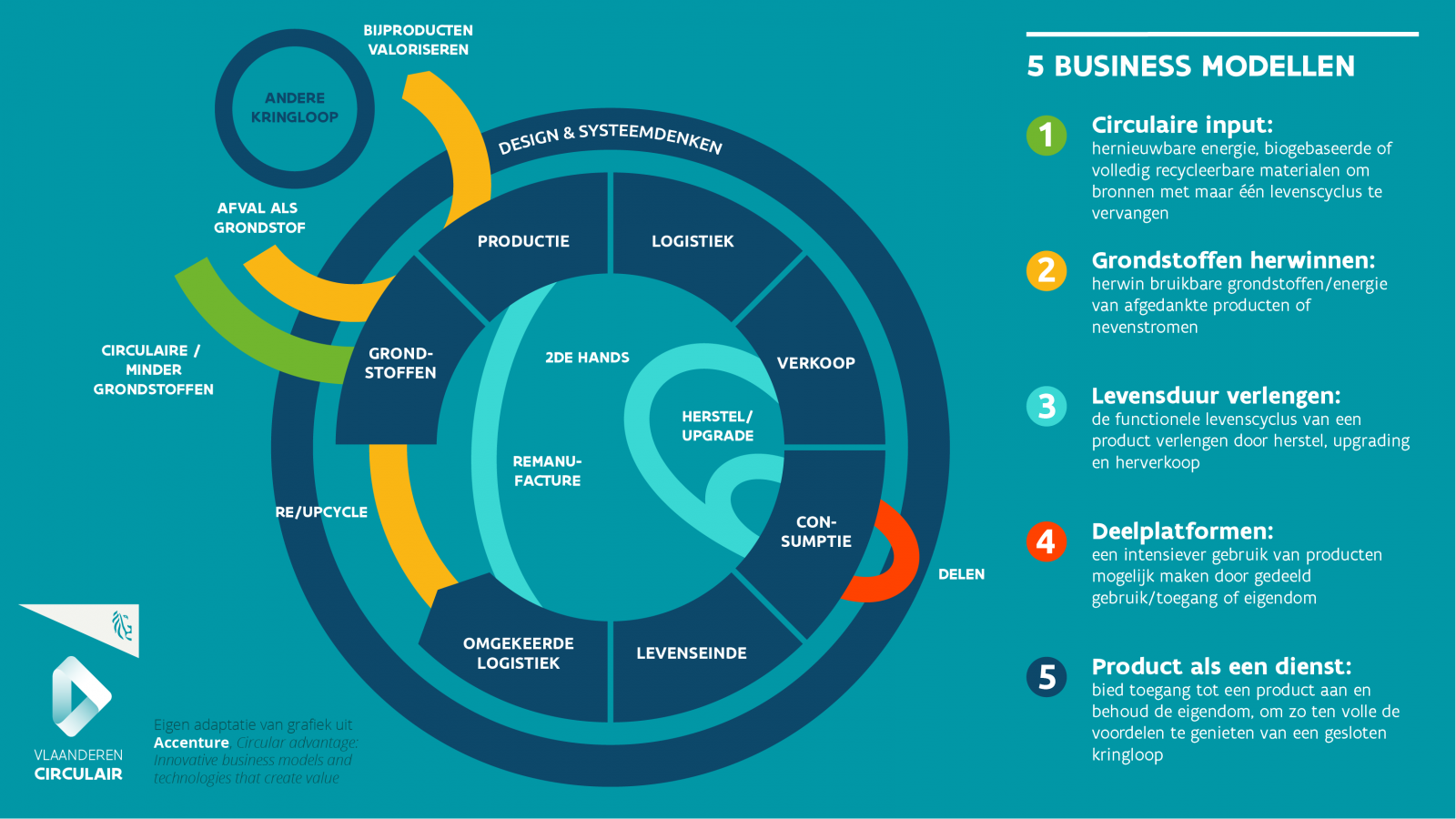
1. Use of circular inputs
It all starts at the beginning: produce as much as possible using renewable energy and bio-based, biodegradable, or recyclable raw materials. Use less materials, dematerialise, or virtualise. Also buy circular.
Some examples:
Looking for a way to sustainably finish perfectly recyclable bitumen roofing, Claerhout Aluminium designed the 'Roofing Clips' click system. Roofing Clips is a circular system that allows you to f…
For centuries, we have been making chocolate from cocoa beans, but did you know that 70% of the fruit surrounding it is thrown away? Cabosse Naturals, a start-up by Barry Callebaut, wants to upcycle …
Bureau Bouwtechniek built a new office and, as it always does, paid close attention to sustainability. This manifests itself in all areas. Location. BB chose an office on Michel de Braeystraat in …
2. Raw materials recovery
Recovery of raw materials and/or energy from discarded products or auxiliary flows (often from a different circuit than one’s own).
Some examples:
In office buildings, interior walls are very often only temporary in nature. After a certain period of time, the need arises to divide up the space differently, and then interior walls, of whatever t…
BIGH is building a network of aquaponic urban farms in major cities More and more people live in urban areas and the need for fresh and safe food is increasing every day. Intensive, integrated urb…
Industrial areas are major consumers of raw materials, but are also still largely virgin territory for the circular economy. Industrial activities are still often poorly coordinated with each other, …
3. Extension of working life
Extend the functional life cycle of a product with repair, upgrading, and resale. Already calculate for the second and third life of a product in the design phase: choose a modular design, parts that can be removed, or parts that can be repaired easily.
Some examples:
A Baby Library is a handy lending system for baby stuff that is only needed for a short time. People who live on a small scale, have a limited budget, make a radical choice for less stuff or only hav…
As a construction company, Groep Van Roey purchases a large number of building systems and products every year. Within our commitment to participate in the Green Deal Circular Purchasing (GDCA), we h…
The Circuit x Plein Publiek project is a collaboration between De Kringwinkel Antwerp (Circuit) and Café Congé (Plein Publiek). The aim is to bring themes around sustainability and circularity in an …
4. Sharing platforms
Enabling more intensive use of products with shared use/access or ownership.
Some examples:
The childcare sector is under pressure. Low margins, high work pressure ... In addition to being care providers, day-care centres are increasingly becoming enterprises with staff and extensive admini…
Packaging is one of the biggest ecological problems of our time. The volumes produced annually, some 170 kg per capita in the European Union, overload current treatment capacities, leading to litter,…
OpenStructures (OS) is a design methodology for open modular and collaborative construction. It facilitates circular material flows and the reuse and repair of components. By allowing for future adap…
5. Product as a service
This entails offering access to a product while keeping ownership to enjoy all the benefits of a closed circuit.
Some examples:
A new, multidisciplinary research collaboration is under development at the science park in Diepenbeek. In this research and valorisation centre, POM Limburg wants to promote circular construction fr…
Building a house today is almost always done with new materials that are only used once: facing brick, concrete, insulation, foundation material ... At their end of life, most of them end up in the b…
In traditional architectural practice, there is little time and space to further expand the range of tasks to include research on circular construction. With the Interdisciplinary Circular Archit…

